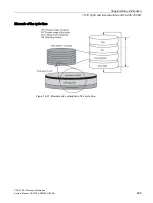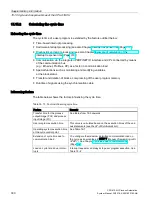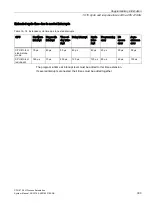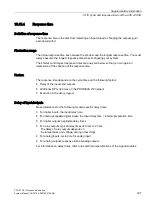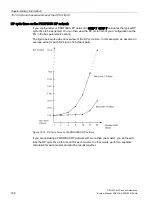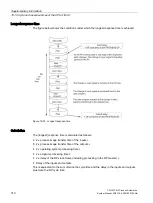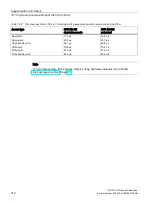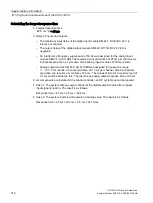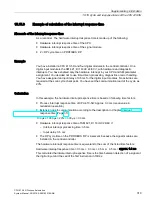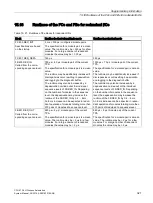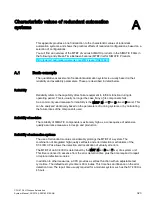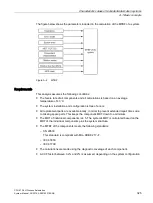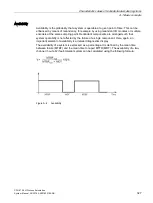
Supplementary information
15.15 Cycle and response times of the CPU 410-5H
CPU 410-5H Process Automation
System Manual, 09/2014, A5E31622160-AB
313
15.15.5
Calculating cycle and response times
Cycle time
1.
Determine the user program runtime with the help of the instruction list.
2.
Calculate and add the process image transfer time. You will find guide values for this in
the tables starting at 16-3.
3.
Add the processing time at the scan cycle checkpoint. You will find guide values for this in
Table 16-8.
4.
Multiply the calculated value by the factor in Table 16-7.
The final result is the cycle time.
Extension of the cycle time due to communication and interrupts
1.
Multiply the result by the following factor:
100 / (100 – "configured communication load in %")
2.
Using the instruction list, calculate the runtime of the program elements processing the
interrupts. To do so, add the relevant value from Table 16-9.
Multiply this value by the factor from step 4.
Add this value to the theoretical cycle time as often as the interrupt is triggered or is
expected to be triggered during the cycle time.
The result is an approximated actual cycle time. Note down the result.
Table 15- 18 Example of calculating the response time
Shortest response time
Longest response time
3. Next, calculate the delays in the inputs and
outputs and, if applicable, the cycle times on the
PROFIBUS DP network.
3. Multiply the actual cycle time by factor 2.
4. Next, calculate the delays in the inputs and
outputs and the DP cycle times on the
PROFIBUS DP network.
4. The result you obtain is the shortest response
time.
5. The result you obtain is the longest response
time.

